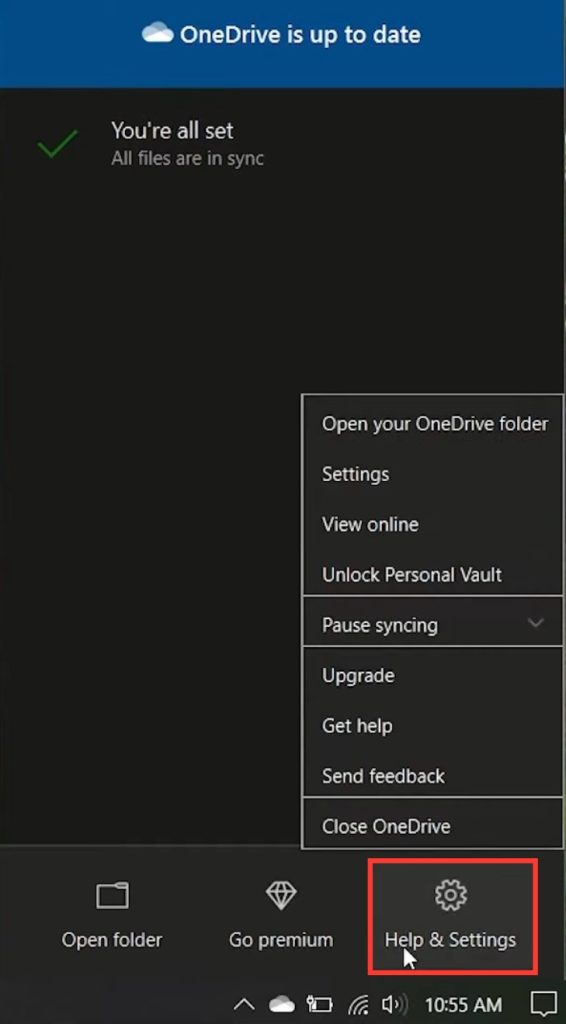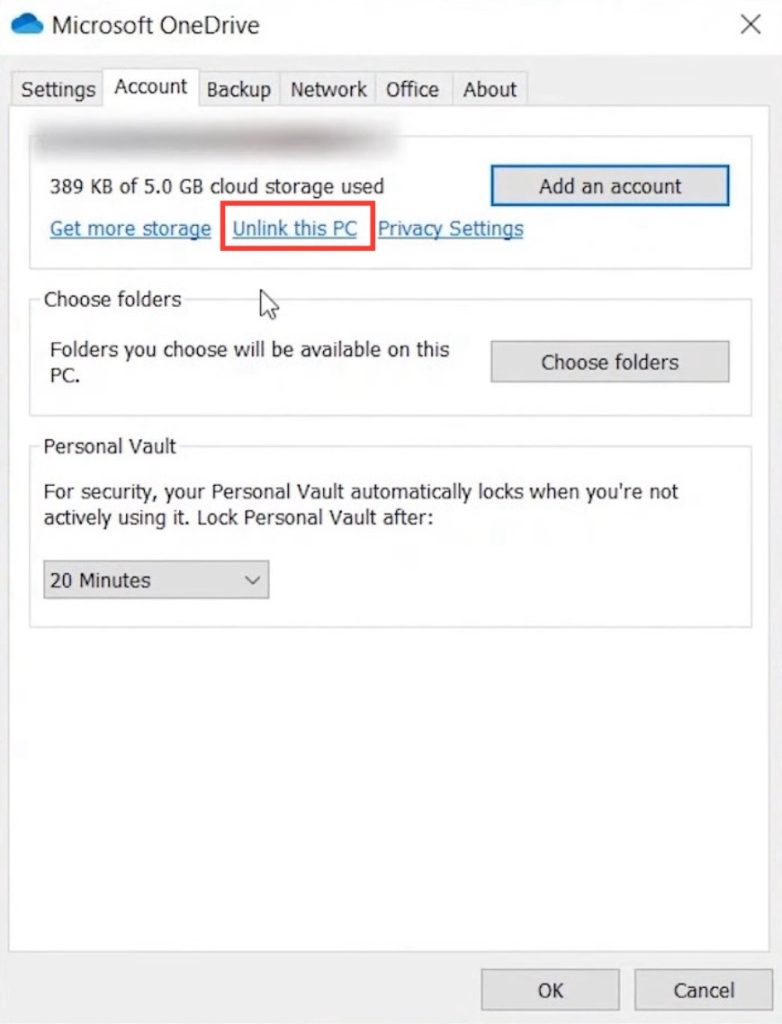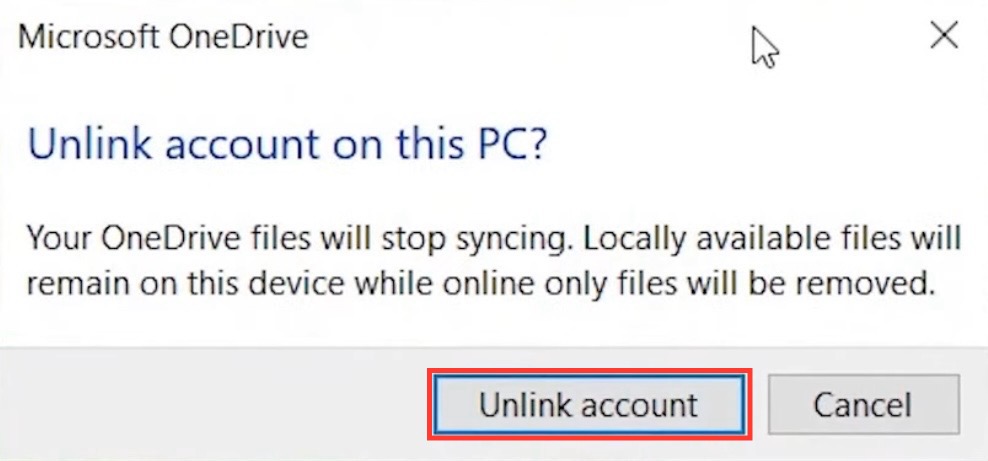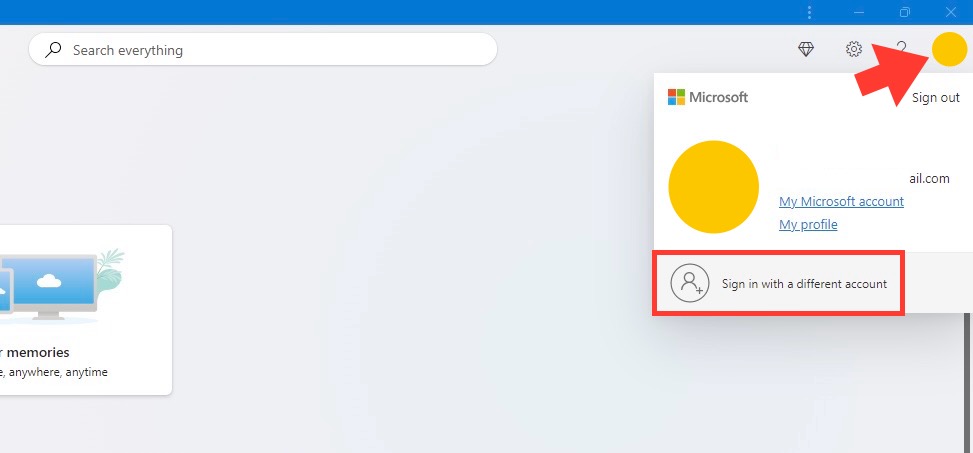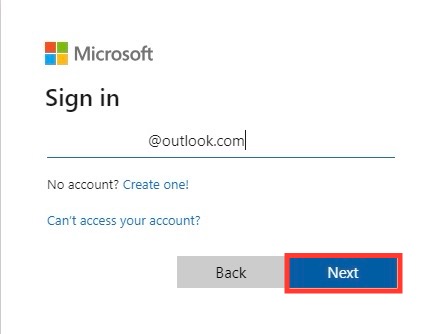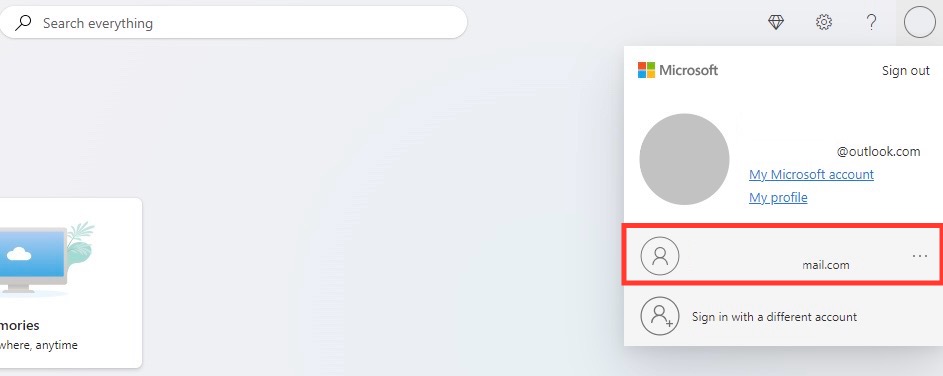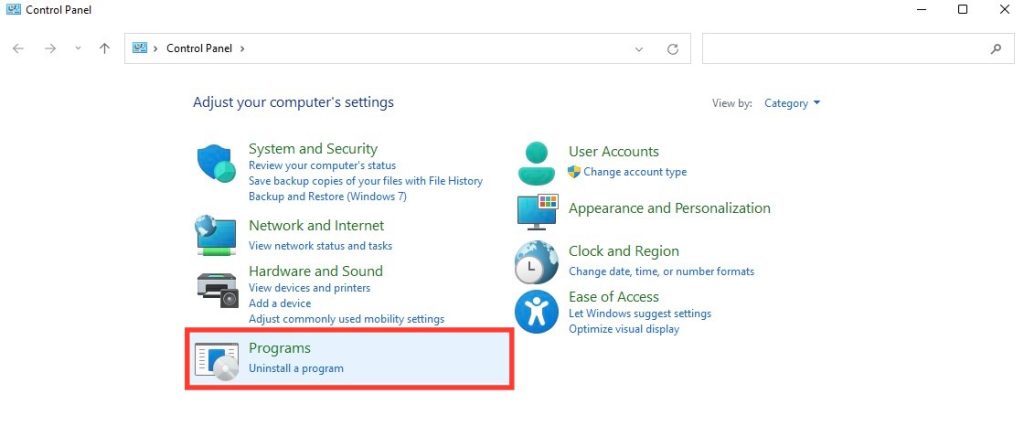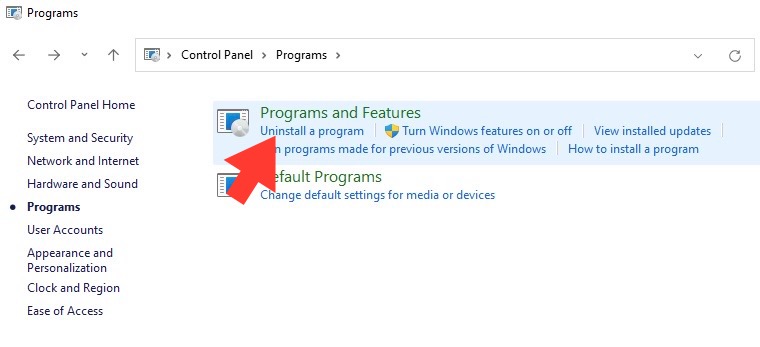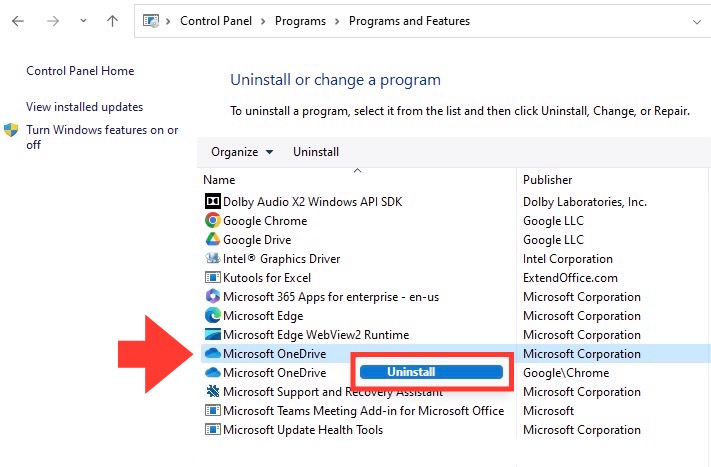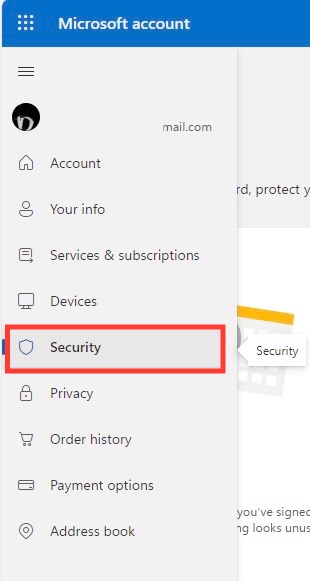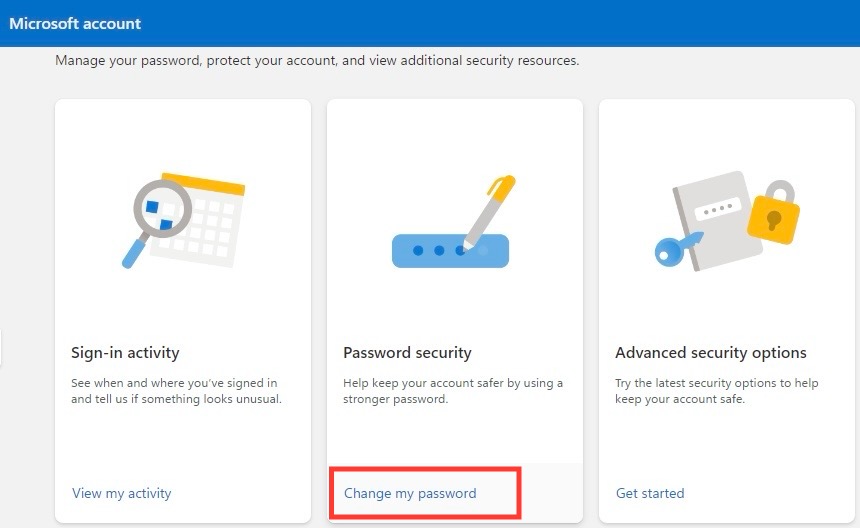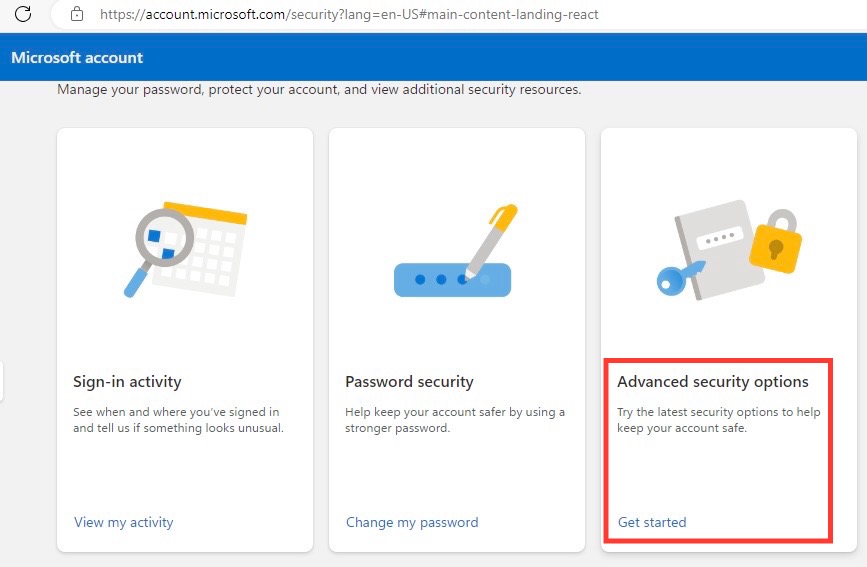Download our 141 Free Excel Templates and Spreadsheets!
Key Takeaways
- To logout OneDrive on Windows 10, you can right-click the OneDrive icon in the system tray, select the three-dot icon followed by clicking on Settings, then navigate to the Accounts tab and click on “Unlink this PC”.
- After unlinking your PC from OneDrive, the files on your PC will remain in the OneDrive folder, but they will no longer sync with the cloud; if you want to delete them, use File Explorer to select all files within the OneDrive folder and press the Delete key.
- Signing out of OneDrive stops automatic synchronization with the cloud and prevents OneDrive from being a forced feature, enabling manual control over file storage and sharing.
Table of Contents
Step-by-Step Guide to Sign Out of OneDrive
Executing the Sign-Out Process
To sign out from OneDrive on Windows 10, follow this detailed step-by-step process:
STEP 1: Access the OneDrive settings: Find the OneDrive cloud icon on the notification area of the taskbar. Right-click the icon and choose “Help & Settings” or “Settings” based on the version you are using.
STEP 2: Navigate to the ‘Account’ tab: In the OneDrive settings dialog box that appears, click on the “Account” tab to view account-related options.
STEP 3: Unlink OneDrive from your PC: Under the “Account” tab, you will see an option labeled “Unlink this PC”. Click on it to begin the sign-out process.
STEP 4: Confirm your choice: A warning message will appear explaining that unlinking will stop syncing your files, and you may be asked to sign in again. Confirm that you understand the consequences and proceed.
STEP 5: Complete the sign-out: Once you have confirmed, OneDrive will be unlinked from your PC, effectively signing you out. The OneDrive folder and files will still be available on your PC, but they will no longer sync with the cloud until you sign in again.
Remember, signing out of OneDrive doesn’t delete the files in your OneDrive folder. It only stops the syncing process. To remove the files from your device, you would need to delete them manually or adjust your sync settings.
Troubleshooting OneDrive Sign Out Issues
Common Problems When Trying to Log Off OneDrive
While attempting to sign out of OneDrive, users occasionally encounter issues that prevent a smooth logout process. Some common problems include:
- OneDrive Icon Missing: Sometimes, the OneDrive icon may not be visible in the system tray, making it challenging to access the settings.
- Sign Out Option Greyed Out: Users may find that the ‘Unlink this PC’ option is greyed out and unclickable.
- OneDrive Continues to Sync: Despite trying to log off, OneDrive may persist in syncing files, which indicates that the sign out hasn’t been fully executed.
- Error Messages: Error prompts can occasionally appear, stating that OneDrive cannot disconnect at the moment or that there are problems in signing out.
- OneDrive Requiring Admin Rights: If you’re using a work or school account, sometimes logging off might require administrator permissions.
- Previous Sessions Still Active: Sometimes, even after signing out, previous sessions may stay active, particularly on other devices.
- OneDrive App Not Responding: The OneDrive app can become unresponsive, preventing access to the sign-out options.
These problems each have corresponding solutions, which often involve a combination of checking for updates, verifying user privileges, and using the correct sign-out method.
Practical Solutions to Overcome Sign Out Challenges
If you encounter difficulties while trying to sign out of OneDrive, consider the following practical solutions:
- Check if OneDrive is running by searching for it in the start menu and opening the app.
- Ensure that OneDrive is set to start with Windows in the “Settings” or by placing a shortcut in the Startup folder.
- Ensure you have administrative rights to make changes to the OneDrive settings.
- Check if any file is currently being synced and wait for the process to complete before attempting to sign out again.
- Manually pause syncing from OneDrive settings, and then try to sign out.
- Restart your computer to reset the syncing process.
- Check your internet connection and try again.
- Look for OneDrive updates or reinstall the app if the issue persists.
- Contact your IT administrator if you are using a work or school account.
- If using a personal account, ensure you’re logged in as an administrator.
- Manually sign out from OneDrive on all other devices.
- Change your password to force logout from all sessions.
- Use the Task Manager to end task and restart OneDrive.
- Repair OneDrive using Windows built-in troubleshooter.
By systematically addressing these sign out challenges, you should be able to securely and successfully log off from OneDrive on Windows 10. If issues persist, consider contacting Microsoft support or seeking professional technical assistance.
Enhancing OneDrive Experience on Windows 10
Tips to Manage OneDrive Integration Effectively
Managing OneDrive integration effectively on Windows 10 ensures that you get the most out of this cloud service without it disrupting your workflow. Here are some tried-and-true tips:
- Selectively Sync Folders: Rather than syncing all the files and folders in your OneDrive, use the “Choose folders” option in the OneDrive settings to select only the folders you need on your PC. This can save space and reduce bandwidth consumption.
- Utilize Files On-Demand: Take advantage of the “Files On-Demand” feature, which allows you to access your files in OneDrive without having to download them all to your device. Files you haven’t downloaded have a cloud icon, indicating they’re available online only.
- Check Storage Space Regularly: Keep an eye on your OneDrive storage space so you don’t run out unexpectedly. Delete unnecessary files or consider purchasing additional storage if needed.
- Set Up Automatic Photo and Video Upload: Enable the automatic upload of photos and videos from your mobile devices to secure your memories and free up space on your devices.
- Use Group Policies for Work and School: For admins managing multiple devices, use Group Policy settings to control the OneDrive sync client settings across the organization effectively.
- Familiarize with OneDrive Sharing Options: Learn about sharing permissions to manage how you share files and folders from OneDrive effectively. This includes setting expiration dates on shared links or using password protection.
- Monitor Sync Status: Regularly check the sync status through the OneDrive icon in your system tray. This will help you catch and resolve any sync issues promptly.
- Keep the OneDrive Client Updated: Ensure that you are using the latest version of the OneDrive client as Microsoft frequently releases updates that introduce new features, security enhancements, and bug fixes.
By following these tips, you can tailor OneDrive to suit your particular needs and integrate it seamlessly into your daily computer use.
Alternative Methods to Manage OneDrive Accounts
Switching Between Multiple OneDrive Accounts
For those who need to manage multiple roles or separate personal from work files, being able to switch between different OneDrive accounts is essential. Here’s how you can alternate between various OneDrive accounts on your Windows 10 device:
STEP 1: In the OneDrive app, tap your Profile Picture and then tap ‘Sign in with a different account’. You can add both Microsoft (personal) accounts and Work or School accounts from this menu.
STEP 4: Once multiple accounts are added, you can switch between them by simply clicking on the account you wish to use within the “Account” tab.
STEP 5: Open the OneDrive app.
STEP 6: Tap your Profile Picture in the upper right-hand corner, then select the account you desire to switch to from the dropdown list.
Please note, on Windows Phone 8.1 you are not able to use multiple personal OneDrive accounts, but you can switch between a personal and work or school account.
Remember that you can only sign into one personal account at a time. If you need to sign into a different personal account, you’ll have to sign out of the current one first. For work or school accounts, you can add and switch between multiple accounts without needing to sign out.
By understanding and utilizing the ability to switch accounts in OneDrive, you can easily manage your different storage spaces and keep your digital life organized.
Removing OneDrive from Windows 10:
STEP 1: Open the Control Panel or Settings App: You can access these through the Start menu or by searching for them.
STEP 2: Navigate to Programs: In the Control Panel, go to “Programs” and then “Programs and Features.” In the Settings app, go to “Apps” and then “Apps & features.”
STEP 3: Uninstall OneDrive: Scroll through the list until you find Microsoft OneDrive, select it, and then click “Uninstall.” Follow the prompts to complete the uninstallation.
Remove Remnants: Optionally, if you want to remove all traces of OneDrive, you may need to delete the OneDrive executable file from the system directory (usually located in %LocalAppData%\Microsoft\OneDrive) and remove the OneDrive folder from File Explorer.
Additional Considerations:
- Before completely removing OneDrive, make sure all your important files are backed up.
- If you’re using OneDrive for work or school,consider consulting with your IT department before making changes.
- Bear in mind that some Windows 10 versions may reinstall OneDrive during a feature update. You may have to repeat the removal process subsequently after major updates.
By following these steps, you can confidently unlink or fully remove OneDrive from your Windows 10 system, ensuring that you have full control over your file storage preferences and your system’s integration with cloud services.
Safeguarding Your Data During Sign Out
Ensuring Data Sync Completion Before Logging Off
When preparing to sign out of OneDrive, especially before unlinking your account or performing a removal, it’s crucial to verify that all your data has been fully synchronized to avoid loss or inconsistencies. Here are steps to ensure your data sync is complete:
- Look for the OneDrive icon on your taskbar’s notification area.
- Hover your mouse over the icon to see the sync status. If you see a message like “Up to date” or “Files are in sync,” your files are fully synchronized.
- If synchronization is not complete, OneDrive will show a different status message indicating that files are still syncing.
- Click on the OneDrive icon to bring up a list of files currently being synced and any encountered issues.
- Open the OneDrive folder on your PC to visually check for the green checkmark icons next to files and folders, signifying that syncing is complete.
- If you see other symbols, such as red “X” (error) or blue circular arrows (syncing), you’ll need to address these before signing out.
- If files are not syncing automatically, you can trigger a manual sync by restarting the OneDrive app or toggling the pause/resume sync option within the OneDrive settings.
- Large files or folders may take longer to sync. Make sure they have sufficient time to complete the syncing process.
- Ensure that your device has a stable internet connection to facilitate the sync process.
- Verify that your OneDrive has enough storage space for all the files you’re trying to sync.
- If your OneDrive storage is full, consider freeing up space or upgrading your storage plan.
- Log into your OneDrive account via a web browser to confirm that the files on your computer match those in your cloud storage.
By taking the time to ensure that your data sync completion is accurate and up-to-date, you safeguard against any unexpected data losses or inconsistencies. Once you’re confident that your files are in sync, you can proceed with logging off or making changes to your OneDrive setup without worry. It’s a good practice to perform these checks regularly, not just before signing out, to ensure the integrity and security of your data.
Protecting Your Files Post OneDrive Sign Out
Signing out of OneDrive doesn’t mean your files are left vulnerable; you can take steps to ensure they are protected even when OneDrive isn’t actively syncing them. Here’s how to maintain the security of your files post OneDrive sign out:
- Regularly backup your essential files to an external drive or another cloud service to ensure you have multiple copies in case of data loss.
- Use Windows’ built-in encryption tool, BitLocker, or third-party encryption software to secure sensitive information stored locally on your PC.
- Apply strong passwords, and, if possible, enable two-factor authentication (2FA) for your Microsoft account to prevent unauthorized access.
- Make sure your system is guarded by reliable anti-virus and anti-malware protection to prevent infections that can compromise your files.
- Keep your operating system and software up to date with the latest security patches and updates.
- Prior to signing out, ensure that file versioning is enabled on OneDrive to keep older versions of files for a set period, allowing for recovery if needed.
- If you need to access your files on public Wi-Fi after signing out of OneDrive, use a virtual private network (VPN) to ensure a secure connection.
- After signing out, if you need to manage files locally, periodically check for any required manual syncs or updates that need to be done once you sign back in.
By implementing these strategies, you maintain control over the security and integrity of your documents and ensure that your data remains protected, regardless of your OneDrive sync status.
FAQs: Mastering the Art of Logging Off OneDrive
What Should I Do If I Cannot Sign Out of OneDrive on Windows 10?
If you’re unable to sign out of OneDrive on Windows 10, here are some troubleshooting steps to resolve the issue:
- Ensure that no files currently open are being synced with OneDrive. Close any Office documents and other files that may be interfering with the sync process.
- Click on the OneDrive icon in the system tray to see if there are any notifications about problems with specific files. Resolve these issues before attempting to sign out again.
- Try restarting the OneDrive app. You can do this by right-clicking the OneDrive icon in the system tray and choosing “Close OneDrive,” then reopen it from the Start menu.
- Sometimes simply rebooting your PC can solve unexpected glitches, including issues with signing out of OneDrive.
- Windows 10 includes a built-in troubleshooter for OneDrive. You can access it by navigating to the “Update & Security” section in the Settings, then to “Troubleshoot,” and select “OneDrive.”
- Clearing the cache may fix sign-out problems. You can usually find the OneDrive cache folder within your local app data directory and delete its contents. Extreme caution is suggested to ensure you do not delete crucial system files.
- Make sure that both your OneDrive app and Windows 10 operating system are up to date. Install any pending updates, as they may contain fixes for your sign out issue.
- If none of the above solutions work, seek assistance from Microsoft Support for further troubleshooting and resolution.
- As a last resort, you could also try to uninstall and then reinstall the OneDrive application. This could resolve deeper issues preventing sign out.
Resolving these issues will often enable you to sign out of OneDrive properly. Remember to save all work and create backups before taking steps that might affect your data.Always exercise patience with synchronization and troubleshoot any connectivity problems you may be facing, as these can often hinder the sign-out process. If you continue to encounter difficulties, consider seeking assistance from a professional IT technician or consulting online forums for advice from other users who may have dealt with similar issues.
After unlinking your account, OneDrive will stop syncing files, but it will still be installed on your computer.
How do I sign out of all OneDrive sessions?
Signing out of all OneDrive sessions across different devices requires a different approach compared to just signing out on one PC. You’ll need to use your online Microsoft account to ensure all active sessions are ended. Here’s how you can do that:
STEP 1: Go to the Microsoft account security page: https://account.microsoft.com/security.
STEP 2: Sign in with your Microsoft account credentials.
STEP 3: Click on “Security” at the left-side panel then “Change password” to follow the prompts to change your password.
STEP 4: Changing your Microsoft account password will automatically sign you out of all current OneDrive sessions, as the devices will no longer have the correct credentials.
STEP 5: While still on the Microsoft account page, you may also have an option by going to “Advanced security options” to “Sign out everywhere,” which will end all browser sessions logged into your Microsoft account, including OneDrive.
Remember that changing your password and signing out of all sessions is a critical security measure if you suspect your account has been compromised. After doing this, you will need to sign in again on the devices you wish to use OneDrive on, using your new password. Ensure you have backups of important files in case of synchronization conflicts that may arise following the reconnection of your devices.
John Michaloudis is a former accountant and finance analyst at General Electric, a Microsoft MVP since 2020, an Amazon #1 bestselling author of 4 Microsoft Excel books and teacher of Microsoft Excel & Office over at his flagship MyExcelOnline Academy Online Course.

